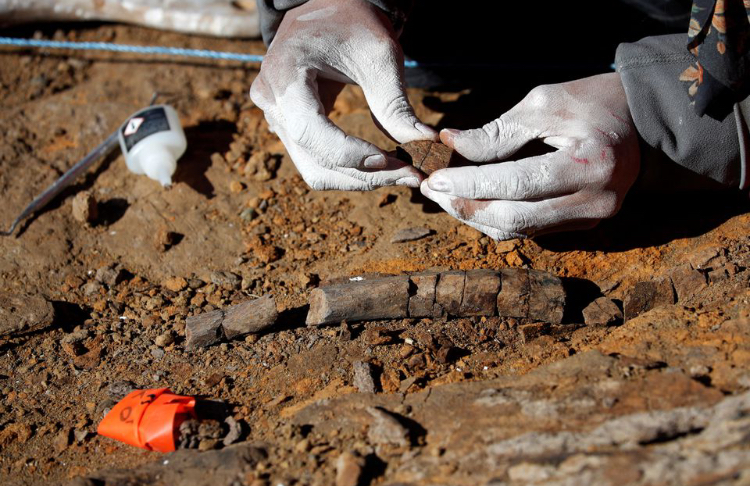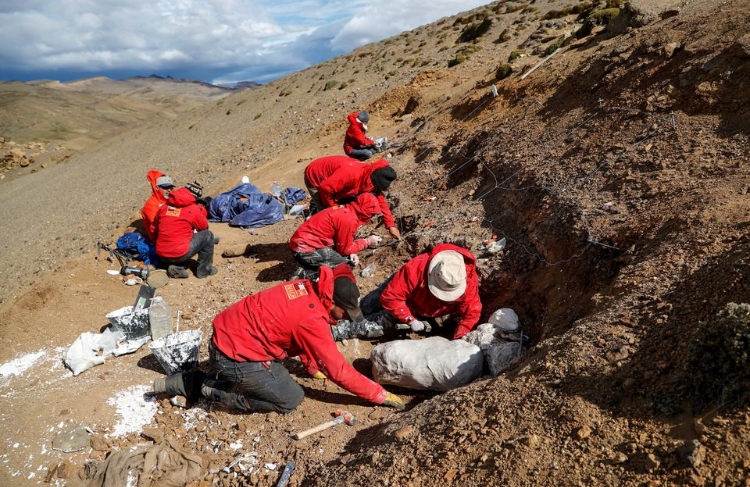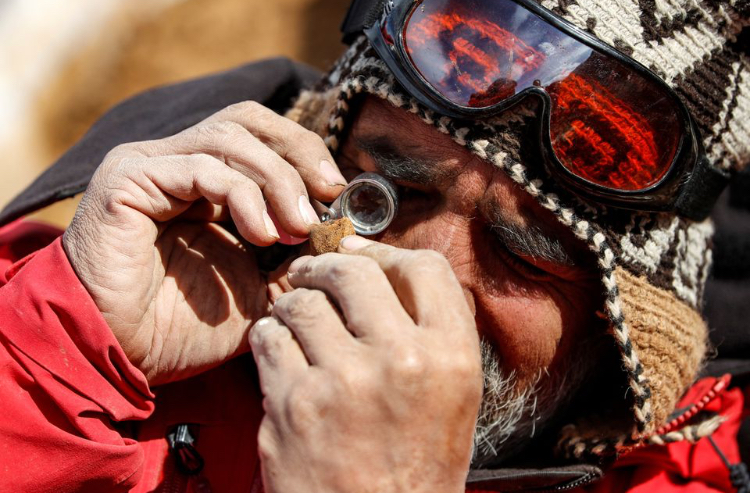A duck-billed herbivorous dinosaur lived on the river plains of Patagonia in southern Chile 72 million years in the past.

A paleontologist checks fossilised bones of the ‘Gonkoken nanoi’, a newly recognized duck-billed dinosaur that inhabited the Chilean Patagonian space, at El valle del rio de las Chinas, close to Torres del Paine, Magallanes and Antarctic area, Chile, on this undated handout picture obtained by Reuters on June 15, 2023. Universidad de Chile/Handout through REUTERS
In response to the examine revealed in Science Advances, the dinosaur, dubbed Gonkoken nanoi, weighed as much as a metric ton and will develop to 4m lengthy.
This investigation has spanned virtually a decade after an expedition led by the Chilean Antarctic Institute (INACH) unearthed fragments of yellowish bones on the base of a hillside near the favored vacationer vacation spot Torres del Paine in Patagonia.

Paleontologists work on the place the place the fossilised bones of the ‘Gonkoken nanoi’ have been discovered, a newly recognized duck-billed dinosaur, that inhabited the Chilean Patagonian space, at El valle del rio de las Chinas, close to Torres del Paine, Magallanes and Antarctic area, Chile, on this undated handout picture obtained by Reuters on June 15, 2023. Universidad de Chile/ Handout through REUTERS
‘At first, we thought it was from the identical group as different South American hadrosaurs, however because the examine progressed, we realised that it was one thing unprecedented,’ the principle writer of the examine Jhonathan Alarcon instructed Reuters.
Alarcon and his staff painstakingly eliminated greater than 100 items, cautious to not injury others. Then, the scientists checked that the bones belonged to the identical species and in contrast them with present analysis to substantiate it was a brand new species.
‘The Gonkoken nanoi shouldn’t be a complicated duck-billed dinosaur, however fairly an older transitional duck-billed lineage: an evolutionary hyperlink to superior types,’ Alexander Vargas, one other examine writer, instructed Reuters.

A paleontologist checks a fossilised bone of the ‘Gonkoken nanoi’, a newly recognized duck-billed dinosaur, that inhabited the Chilean Patagonian space, at El valle del rio de las Chinas, close to Torres del Paine, Magallanes and Antarctic area, Chile, on this undated handout picture obtained by Reuters on June 15, 2023. Universidad de Chile/ Handout through REUTERS
Scientists have used this analysis to digitally reconstruct the skeleton and are hoping to 3-D print it for public viewing.
What’s in a reputation? Gonkoken combines two phrases from the Aonikenk language, ‘Gon’ which means related or just like and ‘koken’ which means wild duck or swan. The indigenous Aonikenk individuals lived in Patagonia till the top of the nineteenth century.
Alarcon says that ‘nanoi’ is in recognition of Mario ‘nano’ Ulloa, a former ranch keeper who gave the staff logistical assist after they first found the species.
Comply with us on social media for extra journey information, inspiration, and guides. It’s also possible to tag us to be featured.
TikTok | Instagram | Fb | Twitter
ALSO READ: Biologist and whale advocate Roger Payne dies at 88 years outdated







